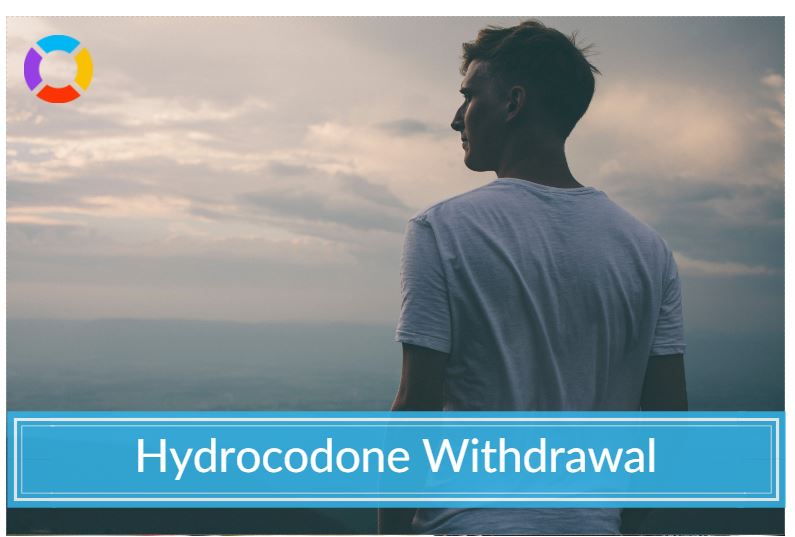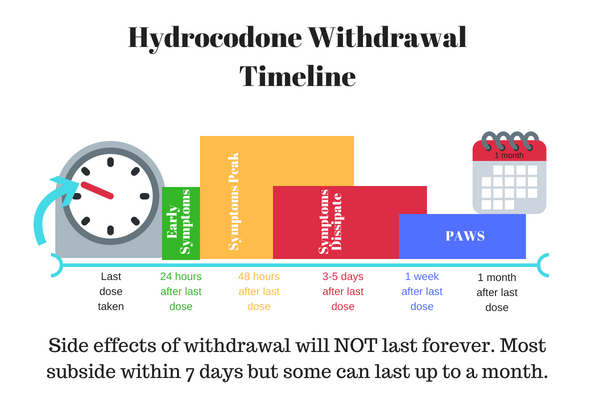Hydrocodone Detox: Signs, Symptoms and Treatment for Hydrocodone Withdrawal

Hydrocodone detox isn’t something that has to be faced alone. Support is available through hydrocodone treatment and helpful recovery resources.
Here you’ll find crucial information on hydrocodone withdrawal, how to manage it and what comes next. Get the essentials on withdrawal symptoms, treatment options and effective tools for hydrocodone detox.
Curious about Hydrocodone detox? Call now.
What Is Hydrocodone and Why Is It Addictive?
Hydrocodone is a Schedule II semi-synthetic opioid. Common brand names include Vicodin, Norco, Lortab and Zohydro.
Drugs classified as Schedule II are considered dangerous and have a high potential for abuse and dependence. “Semi-synthetic” means hydrocodone consists of natural opioids that have been chemically modified.
Opioids are a class of drugs used for pain management that can be highly addictive. Hydrocodone in particular is typically prescribed to treat severe chronic pain.
Beyond medical use, hydrocodone is also abused recreationally. As an opioid, the drug can cause feelings of relaxation and euphoria due to its effects on the central nervous system.
The downside is the long-term effects that this abuse causes: chemical imbalances, physical and mental impairments, dependence and addiction.
Hydrocodone use often leads to dependence due to the nature of the drug. Because it reduces pain and increases feelings of euphoria, users may take the drug even when it’s not needed for pain management.
Over time, they build up a tolerance for the drug, meaning they need more and more to achieve the same effects.
The body becomes accustomed to having the drug, and it becomes dependent on hydrocodone. When the drug is no longer present, withdrawal symptoms occur as the body attempts to stabilize from the chemical imbalance.
Users may continue to take hydrocodone to avoid these physical symptoms, as well as to satisfy psychological dependence that has developed.
Free Resource: Hydrocodone Detox Worksheet
Once hydrocodone dependence occurs, hydrocodone detox is necessary to break free from the cycle of use. Fortunately, resources are available. It’s true that hydrocodone withdrawal feels overwhelming; but you don’t have to go through it blind.
Get your free Hydrocodone Detox Worksheet to track your symptoms, manage cravings and stay on top of your recovery day by day.
Download the free Hydrocodone Detox Worksheet here.
Signs of Hydrocodone Addiction and Abuse
Not sure if you or a loved one needs hydrocodone detox or other support? If you’re concerned about hydrocodone abuse, look for the following signs of hydrocodone addiction.
Physical Signs of Hydrocodone Addiction
Hydrocodone dependence affects how the body functions, which results in physical effects of hydrocodone use.
Physical signs to watch for include:
- Drowsiness
- Small pupils
- Decreased appetite
- Weight change
- Flu-like symptoms
Behavioral Signs of Hydrocodone Misuse
Beyond physical dependency, hydrocodone misuse also leads to behavioral changes.
Watch for the following indications that you or a loved one may have become dependent on hydrocodone:
- Personality changes
- Change in friendships or activities
- Loss of interest in previous hobbies
- Isolation or secretive behavior
- Irritability or nervousness
- Avoiding contact with family or friends
- Wearing long sleeves/hiding arms
- Stealing
Psychological Signs
Some signs of hydrocodone dependency are psychological, meaning they are more internal in nature.
If you or someone you know is experiencing the following symptoms, they require hydrocodone addiction help.
- Hydrocodone cravings
- Spending large amounts of time and energy obtaining and using hydrocodone
- Failed attempts to stop using hydrocodone
- Feeling out of control regarding hydrocodone use
- Willingness to engage in high-risk activities to obtain or use hydrocodone
Why Detoxing from Hydrocodone Is Difficult
Because hydrocodone dependence involves both physical and psychological aspects, the detox process can be challenging.
Physically, once hydrocodone dependence occurs, a person experiences withdrawal symptoms when they stop taking hydrocodone. If they restart or continue hydrocodone use to prevent these symptoms, they perpetuate the cycle of abuse and dependence; both physical and psychological.
If a person is quitting hydrocodone, they may also face relapse triggers that make the process difficult. Being around others who are using the drug or facing stressful situations are examples of common relapse triggers.
Due to these challenges, getting off hydrocodone safely requires appropriate support. A “cold turkey” detox isn’t recommended.
Quitting hydrocodone without medical guidance can be dangerous because of severe symptoms, dehydration, electrolyte imbalances, and risk of relapse.
While opioid withdrawal is rarely life-threatening, complications and overdose after relapse can be. Hydrocodone dependence should be treated with medical supervision, appropriate medication and crucial social support.
You can partner with a medical professional or detox program to assist you with getting off hydrocodone safely. This may involve a tapering schedule or other medication assisted treatment.
Looking for a detox program? Call today to speak with someone who can help.
Hydrocodone Withdrawal Symptoms
Hydrocodone withdrawal symptoms typically begin eight to 24 hours after the last dose of hydrocodone. Hydrocodone detox symptoms then peak and begin to subside, although certain symptoms can linger for some individuals. Here’s what you can expect.
Early Symptoms of Hydrocodone Withdrawal
- Yawning
- Runny nose
- Insomnia
- Muscle aches
- Sweating
- Agitation
- Anxiety
- Watery eyes
- Goosebumps
When these symptoms occur, detox programs can provide hydrocodone withdrawal help. There are medically safe hydrocodone withdrawal remedies that doctors can prescribe to reduce symptoms and lessen the chance of relapse.
Peak Symptoms During Detox
As you’re detoxing from hydrocodone, withdrawal symptoms intensify and peak two to three days after you’ve stopped taking hydrocodone.
Symptoms during this time may include:
- Nausea
- Vomiting
- Diarrhea
- Craving
- Abdominal cramping
- Dilated pupils
Hydrocodone withdrawal management during this time can include medications, hydration, nutrient supplements and counseling support.
Lingering Symptoms After Detox
Once detox is complete, some symptoms can linger. These can include both physical and psychological symptoms.
Common challenges faced during hydrocodone recovery include:
- Lingering cravings
- Insomnia
- Anxiety/depression
Ongoing medication assisted treatment is available to help with these symptoms. For those who prefer hydrocodone withdrawal natural remedies, recovery programs can help with additional counseling, diet and exercise recommendations and peer support.
Hydrocodone Withdrawal Timeline
Before starting this process, most people are curious about the hydrocodone withdrawal timeline. Here’s a breakdown of how long it takes to detox from hydrocodone:
- 0–24 Hours: Early Withdrawal Symptoms
- How quickly symptoms begin varies based on the amount and duration of use.
- Personal health can also affect onset.
- 2–4 Days: Withdrawal Peaks
- Symptoms typically become more severe during this time. It is during this phase that a hydrocodone detox program is particularly helpful.
- Hydrocodone rehab can provide support to minimize symptoms and reduce health risk.
- 5–7 Days: Symptoms Start to Ease
- Once symptoms have peaked, they begin to fade over days five to seven.
- It is important to maintain support during this time to prevent relapse.
- Weeks 2–4+: Psychological Detox Symptoms
- After most physical symptoms have subsided, psychological detox symptoms can persist for a few weeks.
- Ongoing counseling and peer-based support groups can be helpful to address these challenges.

Safe Hydrocodone Detox Treatment Options
Hydrocodone detox treatment is available in a variety of settings.
This allows you to choose the right hydrocodone detox program for your situation. The best treatment outcomes occur when detox is followed by hydrocodone rehab.
Medical Detox Centers for Hydrocodone
Medical detox centers offer 24/7 clinical supervision. Clinicians oversee the withdrawal process, prescribing any medications necessary to mitigate symptoms and reduce health risks.
These hydrocodone detox centers are inpatient settings, where patients stay for several days as they undergo detox.
Outpatient Hydrocodone Detox
During outpatient hydrocodone detox, individuals live at home while receiving treatment.
This option for detoxing from hydrocodone at home with medical support can be ideal when you have family or work responsibilities that prevent you from receiving inpatient treatment.
Not sure if outpatient detox is right for you? Call to get answers, today.
Medication-Assisted Treatment for Hydrocodone Withdrawal
Medication-assisted treatment (MAT) involves receiving FDA-approved medications combined with counseling to address dependence and addiction.
Hydrocodone withdrawal medications are prescribed by a supervising clinician to manage symptoms and allow the individual to function in day-to-day life. Counseling is also provided to address the psychological side of hydrocodone withdrawal management.
Common Medications for Hydrocodone Addiction
Three medications have been approved by the FDA for the treatment of opioid use disorders, including ongoing treatment after hydrocodone detox:
- Buprenorphine
- Methadone
- Naltrexone
Suboxone is a brand name addiction treatment medication that is a combination of buprenorphine and naloxone. This medication, along with methadone for hydrocodone withdrawal, is considered a first line treatment for hydrocodone dependence.
Symptom-Relief Medications
Hydrocodone withdrawal remedies may also include medications that are provided to address specific symptoms, such as anxiety or nausea.
These hydrocodone withdrawal helps include:
- Ondansetron and metoclopramide (anti-nausea)
- NSAIDS/acetaminophen (pain relief)
- Loperamide (anti-diarrheal)
- Clonidine or lofexidine (autonomic symptoms)
- Dicyclomine (abdominal cramping)
- Hydroxyzine (anxiety/insomnia)
Inpatient Rehab After Hydrocodone Detox
For long-term recovery, detox should be followed by hydrocodone addiction treatment. This often involves inpatient treatment at a hydrocodone rehab center.
These programs provide 24/7 supervision and typically last 30-90 days. Treatment may include medication, individual counseling, group counseling and other specialized therapeutic methods.
Participants learn coping strategies and relapse prevention methods.
Can You Detox from Hydrocodone at Home?
Hydrocodone detox at home is sometimes appropriate with clinical guidance and medication support, but it carries risks, including severe symptoms, dehydration, and relapse with overdose.
Withdrawal symptoms can become severe and even life-threatening. As the body attempts to stabilize, a person can experience respiratory distress, fainting, significant dehydration, severe vomiting/diarrhea, and suicidal thoughts.
Due to these risks, it is safer to undergo professional detox. This could involve detoxing from hydrocodone at home, but in a supervised manner. Clinicians can provide medications to address physical and psychological symptoms.
As an alternative, inpatient care can provide 24/7 supervision to minimize risk and prevent relapse.
How Long Does It Take to Detox Off Hydrocodone?
The typical hydrocodone detox time isfive to seven days. Psychological withdrawal may last several weeks. However, the hydrocodone detox time varies for each person.
Factors that influence how long it takes to detox from hydrocodone include:
- Duration of hydrocodone use
- Amount of hydrocodone use
- Overall health
- Age
- Gender
- Nutrition
- Co-occurring mental health disorders
Hydrocodone Detox Worksheet (Downloadable Resource)
Another factor that can affect hydrocodone detox is the extent to which an individual accesses available resources during the process.
The right hydrocodone recovery tools can make the process smoother and more successful. Often, individuals find it helpful to include a hydrocodone detox worksheet in their hydrocodone recovery plan.
Download Your Free Hydrocodone Detox Worksheet
What’s Inside the Hydrocodone Detox Worksheet
Inside the worksheet, you’ll find key tools that provide hydrocodone withdrawal help.
- Daily symptom tracker
- Craving log
- Support contact list
- Daily self-care checklist
- Reflection and progress notes
How to Use this Worksheet
This worksheet can be helpful for hydrocodone relapse prevention. It offers a go to resource where you can track how you’re doing and find support.
Use this worksheet daily to monitor your progress and reflect on your recovery. You can bring it to your doctor, counselor and peer support groups to share insights and receive specific feedback and support.
Long-Term Recovery After Hydrocodone Detox
Detox is the first step of hydrocodone recovery. For long-term success, it is important to follow up with hydrocodone addiction treatment.
This involves ongoing counseling and the development of a strong support network.
Therapy Options for Hydrocodone Addiction
Hydrocodone addiction treatment typically involves individual, group and family therapy. Methods commonly used in these settings include:
- Cognitive behavioral therapy: focuses on identifying and changing unhealthy thought and behavior patterns to prevent hydrocodone relapse
- Motivational enhancement therapy: helps participants build motivation to stick with treatment
- Contingency management: offers incentives for positive behavior
- Group counseling: allows participants to hear from others facing similar challenges in hydrocodone recovery and learn successful strategies from one another
Building Support Networks
Recovery is not a solo sport. An important part of hydrocodone rehab programs is helping individuals develop support networks.
This can happen through a variety of resources:
- 12 Step groups
- Group counseling
- Family therapy
- Volunteer opportunities
- Mentoring/Sponsoring
- Faith-based organizations
These networks provide essential encouragement, accountability and practical support during recovery. They are available to help you face challenges and celebrate victories.
Relapse Prevention Strategies
All hydrocodone addiction recovery plans must include strategies to prevent relapse.
These strategies typically fall into one of several categories:
- Ongoing therapy
- Medications
- Peer support
- Coping-skill development
- Self-care
FAQs About Hydrocodone Detox and Withdrawal
Do you have additional hydrocodone withdrawal questions? The following hydrocodone detox FAQs offer helpful insights.
Yes, hydrocodone is a semi-synthetic opioid.
Yes, a hydrocodone overdose is possible. Hydrocodone is a powerful opioid that slows down breathing.
If more hydrocodone is ingested than the body can handle, breathing slows too much or even stops, which can lead to unconsciousness, coma, or death.
Hydrocodone withdrawal remedies include FDA-approved medications, such as buprenorphine, methadone and naltrexone.
Other medications can help treat specific symptoms such as nausea or headache. Good self-care also helps mitigate symptoms, such as proper nutrition, hydration, exercise and rest.
How long it takes to detox from hydrocodone varies from person to person, but it usually takes five to seven days.
While it’s possible to detox from hydrocodone without medications, you should still arrange for medical supervision.
Withdrawal can cause severe symptoms such as muscle pain, nausea, anxiety, and insomnia, and medical professionals can help manage these safely and reduce the risk of complications.
Hydrocodone detox is the first step of recovery. It is the process of cleansing the body of hydrocodone and breaking physical dependence on the substance.
Rehab for Hydrocodone is the next step, providing additional treatment to address the other aspects of addiction and recovery beyond physical dependence.
Conclusion & Next Steps
Hydrocodone detox treatment is tough, but recovery is possible. Resources and support are available to help you learn how to quit hydrocodone.
Download your free Hydrocodone Detox worksheet here, or explore the Detox.com directory to find a treatment center near you.


